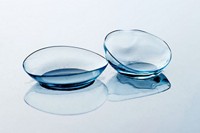Advertisement
Grab your lab coat. Let's get started
Welcome!
Welcome!
Create an account below to get 6 C&EN articles per month, receive newsletters and more - all free.
It seems this is your first time logging in online. Please enter the following information to continue.
As an ACS member you automatically get access to this site. All we need is few more details to create your reading experience.
Not you? Sign in with a different account.
Not you? Sign in with a different account.
ERROR 1
ERROR 1
ERROR 2
ERROR 2
ERROR 2
ERROR 2
ERROR 2
Password and Confirm password must match.
If you have an ACS member number, please enter it here so we can link this account to your membership. (optional)
ERROR 2
ACS values your privacy. By submitting your information, you are gaining access to C&EN and subscribing to our weekly newsletter. We use the information you provide to make your reading experience better, and we will never sell your data to third party members.
Pollution
Microplastic in drinking water found to pose little risk to humans
Most particles pass through human gut, World Health Organization says
by Cheryl Hogue
August 21, 2019
| A version of this story appeared in
Volume 97, Issue 33

Bottoms up with that glass of H2O—and don’t worry about the tiny pieces of plastic widely found in drinking water, the World Health Organization says.
“Based on the limited information we have, microplastics in drinking water don’t appear to pose a health risk at current levels,” says Maria Neira, director of the WHO’s Department of Public Health, Environment and Social Determinants of Health. What’s more, the WHO recommends against the regular monitoring of microplastics in drinking water, saying regulators and utilities should focus their resources on the removal of pathogens and toxic chemicals.
Microplastics are often defined as ranging from 5 mm to as small as 1 μm long, the WHO says in an analysis. They are typically plastic fragments and fibers. The main types of plastic found in drinking water, both from the tap and bottled, are polyethylene terephthalate and polypropylene.
In concluding that microplastic in drinking water poses little risk to people, the WHO considered three types of hazards. One was physically ingesting plastic particles. The second was exposure to chemicals leaching from the plastic, including manufacturing additives such as bisphenol A that can leach from plastic; and toxic pollutants such as polychlorinated biphenyls that can adsorb to polymers. The third was microbial biofilms that can form on plastics.
Evidence suggests that microplastic pieces larger than 150 µm pass through the human gastrointestinal tract and are excreted with feces, the report says. The bodily uptake of tinier plastic bits is expected to be limited, it adds. The health risks from biofilms or any toxic chemicals that they may release are “neglibile,” says Bruce Gordon, WHO coordinator of water, sanitation, and hygiene. Nevertheless, the WHO is calling for more research into the uptake and fate of microplastics in the gut.
Modern and properly operating sewage treatment plants can remove most microplastics from wastewater, the WHO analysis says.
Steve Russell, vice president of plastics at the chemical industry group American Chemistry Council, calls the report good news that “lets stakeholders and policy makers focus resources and attention on higher priorities in delivering safe water.”





Join the conversation
Contact the reporter
Submit a Letter to the Editor for publication
Engage with us on Twitter